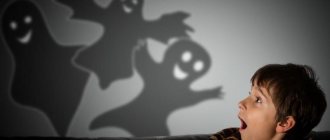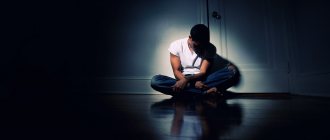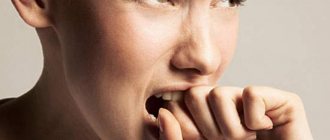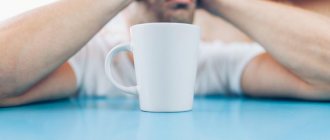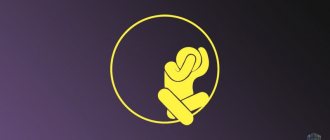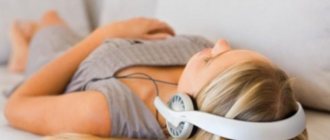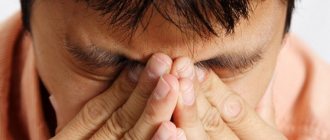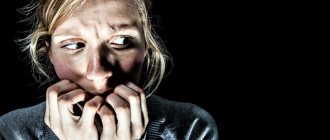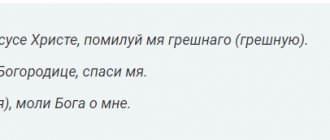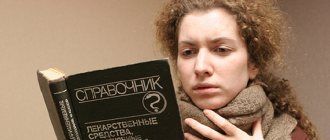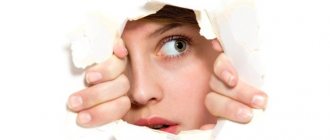What is a phobia? This is an irrational fear!
Social phobia
In medicine, phobia is a type of anxiety disorder, defined as a state of fear. These conditions last for more than six months and are characterized by the fact that the patient constantly tries to avoid getting close to the objects of the phobia (usually there are several of them). In the end it all ends with an acute attack. For example, at the sight of blood or a wound, such a patient may faint.
Psychosomatics & hypnoanalysis: how fears and phobias are formed as a result of psychotrauma
Lecture on hypnosis at the All-Russian Professional Psychotherapeutic League.
All phobias are usually divided into three groups:
The first group is fear of objects and phenomena of a biological nature. This could be animals, natural phenomena, blood, etc. The most common are fear of spiders (arachnophobia) or snakes. These phobias are called specific phobias, and they affect about 6-8% of the population in the West and 2-4% of people in Asia, Africa and Latin America per year. Specific phobias are treated exclusively with exposure therapy, since medications are powerless in such cases. The essence of exposure therapy is that a person faces the source of his anxiety until he masters the ability to overcome it.
The second group includes people who were unable to survive the negative experience of any interaction. These people are afraid of the situation repeating itself (for example, being judged by others). This behavior is called social phobia and affects about 7% of the population of the United States and 0.5-2.5% in the rest of the world.
The third group includes fears born of open space where it is impossible to hide, and this reaction is usually called agoraphobia (from Agora - a square full of people). This type of phobia affects 1.7% of people around the world, and women are twice as likely as men.
Both social phobias and agorophobias are usually neutralized by pharmaceutical drugs: antidepressants, benzodiazepines or beta blockers.
Psychology of hypnosis #1. How to treat and create stuttering or other phobia in hypnosis?
The ABC model in cognitive therapy. Treatment methods for phobias
Here's what the Diagnostic and Statistical Manual of Mental Disorders, Fifth Edition, DSM-V (Diagnostic and Statistical Manual of Mental Disorders, 5th edition) writes about the categories of anxiety disorders.
1. Specific phobias - fear of certain objects or social situations that instantly lead to a feeling of anxiety, and sometimes to a panic attack. Specific phobia is divided into five subgroups: animal type, natural processes type, situational type, “blood-injection-wound” and others. A specific phobia is a pronounced and deeply rooted fear that manifests itself excessively in moments of anticipation or being directly next to a phobic object or situation; Specific phobias can lead to loss of control, panic or fainting if they find themselves in close proximity to the object of phobic horror.
2. Agoraphobia - a generalized fear of being outside the home or any other “safe” zone, leading to possible panic attacks, which can also be caused by various specific phobias, such as open space, social embarrassment (social agoraphobia ), fear of contamination (fear of germs). Agoraphobia may be complicated by obsessive-compulsive disorder or PTSD (post-traumatic stress disorder) if the trauma occurred outside the home. If specific phobias are determined by connections with objects or situations, then social phobias are an expression of social fear and people's opinions. The DSM (Diagnostic and Statistical Manual of Mental Disorders) divides specific phobias into five subtypes: animal, natural environment, blood-injection-injury, situational types, etc. Among children, phobias related to animals, the natural environment (darkness), and blood-injection-wound develop between 7 and 9 years of age and are part of normal development. In addition, specific phobias prevail in children aged 10 to 13 years.
3. Social phobia, also known as social disorder anxiety, refers to the fear of a situation in which a person is afraid of being judged by society. According to diagnostic criteria, unlike specific phobias, social phobias include a fear of public places and situations that lead to feelings of embarrassment or humiliation.
All phobias vary in severity. Some patients may simply avoid the object of their fear and experience relatively mild anxiety, while others experience full-blown panic with all the attendant adverse symptoms. Most patients realize the irrationality of their fear, which, nevertheless, they are unable to overcome. They complain of dizziness, loss of bowel and bladder control, rapid breathing, pain and shortness of breath.
Experiments in hypnosis: hypnotic phenomena in deep hypnosis (somnambulism). Hypnosis training
What is cognitive therapy and how does it work?
Fear and anxiety: causes and signs
What is the cause of anxiety and fear? Many people equate these concepts, but there is a significant difference between them. Fear is always caused by a specific stimulus or situation. For example, you are crossing the road and at that time a car is driving towards you. The result will be fear. And if you are walking and thinking that a car could run into you at any moment, this will be anxiety. Depending on the intensity, it can simply cause mild excitement, or it can provoke obvious anxiety, internal panic.
In order to get rid of fear and anxiety, you must first find out the cause of these feelings. Such vivid emotions are often accompanied by excitement that appears due to internal conflict, which arises regardless of a person’s age, worldview and position in society.
There are several main causes of fear and anxiety:
- decreased confidence in yourself or others;
- errors of upbringing in childhood (increased emotionality of parents, perfectionist parents, parents who underestimate their children, etc.);
- unpleasant and painful life experiences;
- eating disorder;
- sedentary lifestyle;
- mental trauma;
- various irritating stimuli;
- a new environment that a person views as potentially dangerous;
- character traits (asthenia, pessimism, etc.);
- somatic diseases caused by hormonal imbalances, endocrine disorders, a sharp decrease in blood sugar levels;
- bad habits (alcoholism, drug addiction, etc.).
A predisposition to the appearance of fear and anxiety depending on gender has been identified. Thus, it has been scientifically proven that women are more likely than men to experience strong emotions.
The main manifestations of fear, anxiety and panic attack are:
- rapid pulse, intermittent breathing, surges in blood pressure;
- increased emotional excitability;
- physical weakness, fatigue;
- trembling in the limbs;
- loss of sensations of the surrounding world and oneself;
- insomnia, causeless stomach and muscle pain;
- dysfunction of the genitourinary and digestive systems;
- headaches, migraines;
- menstrual cycle disorders in women.
Such strong experiences can have a negative impact not only on a person’s mental, but also on their physical health. If you do not get rid of constant fear and anxiety in time, then irreparable damage can be caused to the nervous system.
Causes
According to statistics, pathological fear occurs due to two most common reasons:
- Stressful or traumatic situation. This reason is the most common, although people do not always remember what exactly happened, as a result of which constant fear appeared. However, a series of associations associated with a past situation can cause fear. For example, the fear of driving is based on a previously experienced accident, and the fear of choking is based on food getting stuck, which caused a panic experience. People with a developed imagination can acquire a phobia after a terrible incident with friends, or simply after seeing something frightening on TV.
- Hereditary factor. Many fears, for example, fear of heights, snakes, spiders, etc. are based on the instinct of self-preservation and are inherent in all humanity. However, in people with a weak nervous system or a hereditary predisposition, the instinct of self-preservation can transform into obsessive fear.
Understanding and establishing the true causes of fears is already half the success towards answering the question of how to cope with phobias.
How to get rid of fear and anxiety through meditation
You can get rid of fear and anxiety with the help of ordinary meditation. The technique for doing it is quite simple:
- Take a comfortable position.
- Concentrate on your breathing. Sometimes using the words “inhale” and “exhale” helps. Don't try to achieve any special effect, just don't think about anything. If you notice that you are distracted, do not get upset, but focus on your breathing again.
In passive concentration, a person is both relaxed and attentive. Don't stress, because this may cause additional frustration. You will become worried and nervous, which will prevent you from concentrating properly. There is no meditation that does not relieve fear and anxiety. Even if you think it failed, after a while you will still notice a positive effect.
Experts at the Witch's Happiness store recommend:
White candle “Strength, beauty, health” Colored candle in individual packaging
216 rub. 240 rub.
buy
Sachet pillow “Mint” Sachet with mint, 11 x 11 cm
350 rub.
buy
Another meditation technique is square breathing. In this case, concentration on breathing is also necessary, but a person must not only monitor it, but also control it. Combining the above techniques allows you to achieve maximum effect. If the square breathing technique is broken down into stages, it will look like this:
- Inhale for four seconds.
- Hold your breath for four seconds.
- Exhale for four seconds.
- Hold your breath for four seconds.
After trying this technique once, you should increase its duration per second at each stage until you reach the maximum possible time. Using square breathing, you can regulate cardiac activity, which is directly related to the level of stress in the body. In this way, you can not only get rid of anxiety and fear, but also prevent the development of addictive conditions.
Articles recommended for reading:
- How to cure depression
- Karmic healing of soul and body
- Types of natural stones for your health and happiness
According to testing results, alcoholics with high heart rate variability remain in remission much longer. Using this technique, you will achieve more active mental activity and better health. During the process of breathing exercises, the brain is actively saturated with oxygen, which has a positive effect on the volitional qualities of the individual.
Affirmations and affirmations are techniques that help eliminate the cause of anxiety. To do this, a belief is formulated that needs to be implemented. Then it is repeated many times over a certain period of time.
You should create a verbal formula of persuasion yourself. Then it will be more effective. For example, it might sound like this: “Unforeseen situations light me up.” In some ways, affirmations are similar to meditation. This also requires concentration on a specific object and repeated repetition.
Please remember that it will take time to achieve results. Efficiency depends on the level of development of the ability to self-suggestion. Gradually your skills will improve and you will be able to achieve the desired result in one session. Ideally, belief is accepted at a subconscious level. If you memorize it purely mechanically, it will take much more time. Repeating a belief multiple times over a month is considered the most effective.
If you don't succeed with affirmations, try working with afformations. They are similar, but sound like a question. That is, a person not only inspires a thought, but convinces himself of it. The action of afformation is based on logical memory. Technically this involves saying the question over and over again. You can get rid of fear and anxiety using different meditative techniques, but the result will be the same - your peace of mind.
Drug treatment of phobias
In the case of anxiety-phobic disorders, drug treatment is not a panacea for fear, but a means that alleviates and weakens the manifestation of anxiety symptoms. As a rule, the lasting effect of taking medications is consolidated as a result of their long-term use and according to clearly established courses. Self-interruption of the course of medication by the patient and failure to fully comply with the doctor’s recommendations leads to aggravation of the situation when fears not only return, but their intensity increases and the scale of the objects of anxiety increases.
The following groups of medications are used in the treatment of anxiety-phobic disorder:
Beta blockers
Used to quickly reduce somatic manifestations. The result of exposure to the components of this group is blocking the production of adrenaline. Although beta blockers do not affect or eliminate the psycho-emotional symptoms of the disorder, they help control and minimize most physical symptoms.
Antidepressants
The main choice in the treatment of anxiety-phobic disorders. As a rule, drugs of various pharmacological classes are used: selective serotonin reuptake inhibitors, seratonin and norepinephrine reuptake inhibitors, tricyclic and heterocyclic antidepressants. To treat various phobias, certain drugs are used, including: anafranil (clomipramine), fluvoxamine, sertraline, fluoxetine, moclobemide (Aurox).
Tranquilizers, including benzodiazepines
Drugs in this group require extremely careful prescription and use. Although this group is the most popular for relieving obvious intense vegetative symptoms of anxiety, long-term use of drugs leads to the development of persistent drug dependence. The most “harmless” tranquilizers: meprobamate, hydroxyzine. Benzodiazepine tranquilizers should be used only in severe cases and only in short courses. The most effective in this series are: alprazolam, clonazepam; diazepam, elenium (in the form of droppers or intramuscularly).
Neuroleptics
Used for phobias with the inclusion of systems of “protective rituals” (for example, obsessive counting). As a rule, triftazine and haloperidol are used for phobic disorders.
First aid for fears and anxiety
The reason to get rid of fear and anxiety may be the need to make a quick, correct decision or to begin an important activity when you cannot think, doubt and be distracted by your condition for a long time.
In this case, it is necessary to have in your arsenal a number of ways to quickly stabilize the emotional background:
- If you are very scared or emotionally stressed, begin to breathe slowly and deeply. Inhale and exhale air 10 times. This time will be enough to get used to what is happening and understand what to do next.
- To get rid of anxiety, talk to yourself. This can help you understand the situation; you will sort everything out and systematize it. As a result, you will calm down, your heart rate will stabilize, and you will be able to understand what is happening. An important nuance: when a person calls himself by name, it gives him a feeling of security.
- To get rid of anxiety and fear on your own, you can simply get very angry at a situation or a certain person. Then anger will displace worries, and you will begin to act very quickly.
- You can get rid of fear with laughter. Try to remember some funny situation from life, because everyone has funny events. Under the influence of laughter, you can not only get rid of fear and anxiety, but also improve your mood.
There are special “grounding” exercises that can be used to easily restore contact with the present. They will connect mental and physical activity together, increasing overall efficiency.
They are based on basic human senses: vision, hearing, touch, smell, tactile sensations. They are the ones responsible for a person’s understanding of where he is at the current moment. Concentrate on the component that resonates most with you.
- Remind yourself who you are.
State your name and number of years. Say the exact address of your current location. List a list of tasks completed today. Voice your next action plan.
- Breath.
Focus your attention on your breathing and take 10 slow breaths in and out. Count them to yourself.
- Feel it.
Wet your face with water and feel the changes in how your facial skin feels when the liquid gets into it and when you wipe it with a towel. Take a sip of cold water. Hold something from the refrigerator in your hands, such as a bottle of lemonade. Concentrate on feeling the cold and wetness of its surface. Drink lemonade and feel the taste of the liquid, the movement of bubbles across the tongue and palate. And then take a sip of hot tea. Feel its temperature and taste.
- Nightmare.
If you had a nightmare at night from which you suddenly woke up, to get rid of fear and anxiety, pull yourself together and try to concentrate on specific data about yourself. Remember your name, age, address. Look around and name the objects around you. List the sounds that are heard at the moment. Touch the bed, feel the texture of the bedding, the coolness of the air.
- Cloth.
Feel the characteristic features of the clothing on your body: how long the sleeves are, whether the legs are closed, whether the seams are comfortable when moving.
- Gravity.
While sitting, touch the chair underneath you, trying to feel the weight of your own body. In bed, concentrate on the sensations that arise at the point of contact of your body with the surface. Feel your head touching the pillow, then move your attention to your torso and limbs.
- Stop and listen.
Listen to what you hear around you. Describe each sound that is near you, then the sounds coming from afar. Look around you and name the distinctive features of large objects first, and then smaller ones.
- Get up and move around.
Concentrate on your movements. Stomp your feet, clap your hands. Try to feel your own feelings to the fullest. Rub your hands vigorously. Listen to the sounds that accompany your actions.
- Temperature.
Pay attention to the air around you. If you are indoors, then go outside and compare the sensations of the temperature difference between inside and outside.
- See, hear, touch.
A quick way to get rid of fear and anxiety is to focus on five things. Find five objects around you that you can touch, five objects that you can see, hear, smell, taste.
Experts at the Witch's Happiness store recommend:
Black twisted candle with herbs “Against Evil” Wax candle with herbs
229 rub. 270 rub.
buy
- Immersion.
Immerse your hands in some substance that has an unusual texture.
- Music.
Choose a piece of music or a fragment of it and listen, concentrating all your attention on it.
- Garden.
Interaction with plants has a positive effect on a person’s emotional state. Spend some time in the company of flowers in the garden or at home. Walk on the ground, breathe in the aromas. All this will help get rid of mental stress and promote calm.
How to get rid of fear and anxiety using folk methods
It is also possible to get rid of fear and anxiety using folk remedies if you know special recipes. The most popular is an oat-based decoction with the addition of honey. Various natural-based sweets can bring benefits to the body and mental state: acacia flower jam, dried fruits, desserts. Carrots are a universal mood stabilizer and can be consumed in any form. A great way to relax is to take a bath with ginger.
If you are constantly tormented by feelings of anxiety and fear, you can get rid of it with the help of herbal infusions, made yourself or purchased at the pharmacy. The most popular compositions are:
- a decoction of lemon balm with the addition of nutmeg and lemon zest enhances brain activity and eliminates neuroses;
- Motherwort decoction is a generally accepted remedy, but when taking it it is important to remember the dosage;
- A decoction of borage herb, consumed on a regular basis, will significantly reduce the level of anxiety;
- A decoction of peppermint taken in the morning will help reduce sensitivity to stress factors;
- A decoction of chicory roots will help get rid of fear and anxiety if you drink it at least five times a day.
What is phagophobia
What is phagophobia? Phagophobia is a fear of swallowing, an irrational, panicky fear of swallowing something (water, food, medicine). A person is haunted by the fear of choking. The name literally translates as “fear of eating,” but it is important not to confuse this with other disorders, such as anorexia. In the latter case, the person is also afraid to eat, but for fear of gaining weight. With phagophobia, a person is afraid to swallow food for fear of choking.
A medical examination for phagophobia shows that the person is completely healthy. He has no congenital or acquired gastrointestinal defects, no functional failures or disorders, and no signs of dysphagia. However, the patient still experiences discomfort and is afraid to swallow. If the picture looks like this, then this is a purely psychological (psychosomatic) problem. If there are medical reasons that cause fear, then medical and psychological treatment is needed.
Manifestations of fear of choking on food:
- inability to take medications orally;
- inability to drink or eat;
- loss of interest in certain foods, liquids or all food;
- rapid weight loss;
- chronic anxiety, depressive tendencies.
Before each meal, the phagophobe spends a long time adjusting himself. Before each bite, he tries to control his anxiety again. The patient carefully checks what is on his plate and chews the food for a long time. He creates a menu that is safe, in his opinion. Phagophobes themselves determine which product is dangerous for them and which is not. The range of products varies from case to case.
At the psychophysical and behavioral level, the following reactions are noticeable:
- desire to run away, hide;
- increased sweating;
- fainting state;
- dizziness;
- headache;
- nausea;
- breathing problems;
- sleep problems;
- irritability;
- fussiness;
- panic attacks.
During a panic attack, the patient thinks that he will go crazy or die. Panic can begin both before the meal and during, after it. For example, if the patient feels that the swallowed food has formed a lump in his throat, that a bone is stuck, and that because of this he cannot breathe. And phagophobes often imagine something like this.
This is interesting! Fear of choking is a rare and unusual disease. It is often confused with the fear of suffocation - pnigophobia. Phagophobes are afraid of the very act of swallowing; pingophobes are afraid that swallowing will lead to suffocation. It can be very difficult to distinguish between these phobias; even a professional cannot always quickly make a diagnosis.
